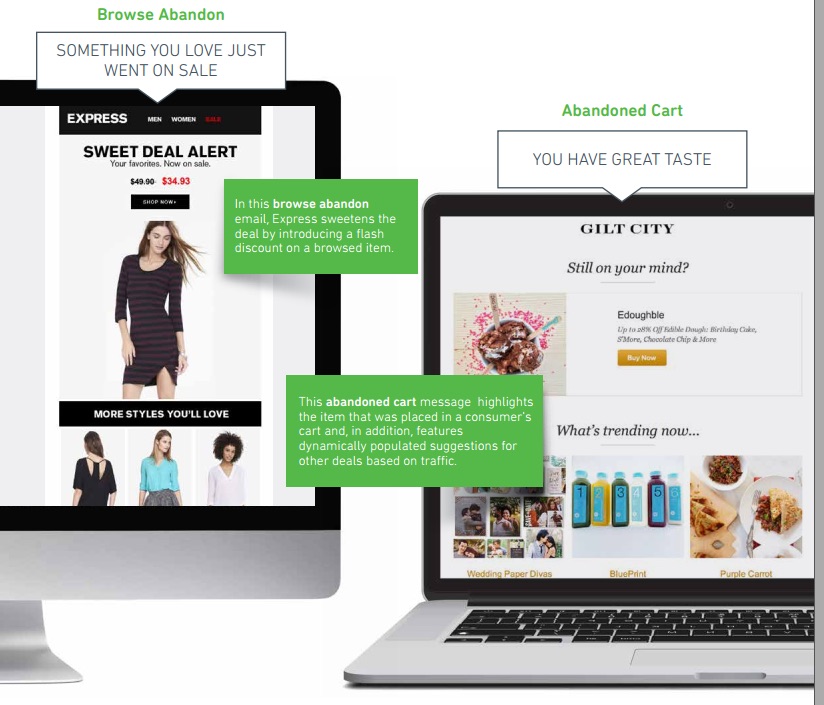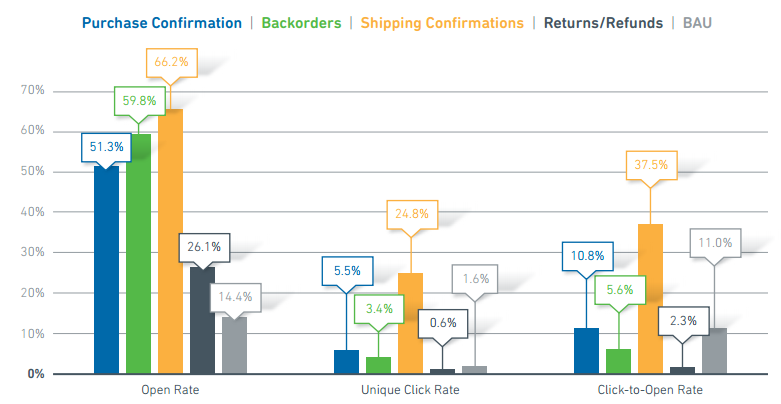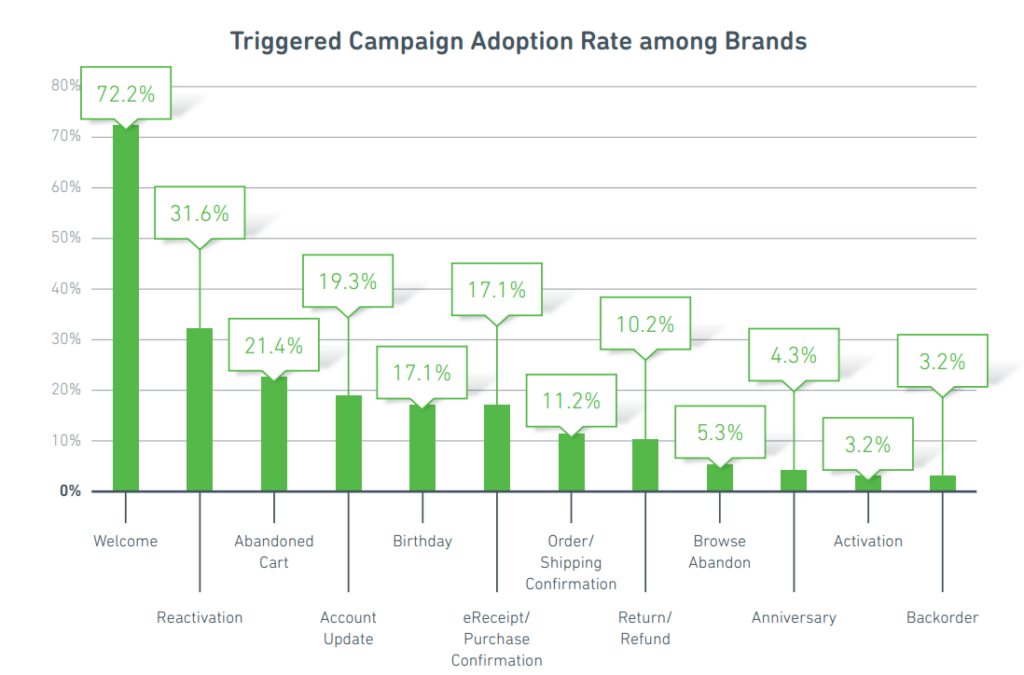When it comes to your email marketing, you likely spend a great deal of time tweaking your message and analyzing how to improve your open and click-through rates. According to joint research by IBM and eConsultancy, fully 90% of marketers agree that personalized, relevant communications with their customers is crucial to their success. But when customers were asked if they felt like the average brand understood them, 80% answered no.
That’s a huge gap – and something needs to be done about it.
Thankfully, there’s a promising solution that’s both cost effective and boasts some pretty significant results.
It’s called “triggered campaigns”
What Are Triggered Campaigns?
You may have already implemented triggered campaigns for certain points in your sales funnel, such as “Welcome” emails for first time customers, or remarketing messages if someone left an item in their cart. But this is only scratching the surface on the potential of triggered campaigns, as a new report from YesMail reveals.
The report segments email communications into two groups: The Business as Usual (BAU) group, which commonly includes:
- Promotional emails and sales notifications
- New product launches or brand news
- Newsletters that customers have opted into
- Refer-a-friend campaigns
Triggered campaigns, however, are broken down into different segments, including Lifecycle campaigns which include:
- Welcome messages
- Onboarding
- Activation
- Milestones and
- Surveys or polls
They can also include the aforementioned Remarketing messages such as abandoned cart notifications. What many marketers don’t realize, however, is that triggered campaigns can also consist of transactional emails, like:
- Order confirmations
- Shipping confirmations
- Backorder notifications
- Return/Refund requests
As well as real-time notifications from sports, weather or location-tracking.
So as you can see, there’s a great deal of resources to work with. Within YesMail’s report, they spotlight customer Le Creuset’s campaigns. Le Creuset sells cookware of all kinds, and their business as usual emails include things like news, special offers or product ideas:

While these are well-made foundational emails designed to help keep customers informed about the company’s products and other initiatives, they aren’t designed to elicit an immediate response the way triggered campaigns are. To see just how well triggered emails compare to BAU emails, YesMail looked at 24 billion emails deployed within 2015 using their cross-channel marketing communication platform.
They noted that although triggered campaigns made up only 2% of all emails sent during 2015, those same emails generated 4% of all email opens at 9% of all click-throughs. Compared to BAU emails, the results from triggered mails were very impressive:

When Should I Use Triggered Emails for Best Results?
This is another common question marketers ask – since triggered campaigns have generated such solid numbers, when is the best time to use them? Of course, to get this information, you’ll need certain details from your customer, and that customer will need to be at a certain point in the buying lifecycle. For instance, you wouldn’t send an order confirmation blast to everyone on your list. Triggered campaigns are best thought of as a way to pounce on opportunities as they present themselves.
And as it turns out, marketers are really, really good at making customers feel welcomed. After that, the push to trigger relevant, personalized campaigns falls off substantially.
No wonder customers feel like brands don’t really know them (or make an attempt to get to know them!)
The full YesMail report details the best triggers to take advantage of, including suggestions on how to make the most of them. However there were a couple that stood out to me as highly underutilized – especially in my own experience of conversion optimization for companies. They are:
The Browse Abandon Trigger
“Browse Abandon” isn’t the same thing as getting an abandoned cart remarketing email – although it is similar in nature. The Browse Abandon trigger is a relatively new function which reminds the customer that an item on a page they browsed just went on sale. The Browse Abandon feature uses the same technology as an abandoned cart remarketing reminder, so it’s easy to implement if you already have that reminder functionality in place. Here are examples of a Browse Abandon trigger and an Abandoned Cart trigger respectively:

And here’s the kind of results they got:
After-Sales Service Trigger
After-sales campaign triggers can include (but are certainly not limited to)
- Purchase confirmations
- Shipping notifications
- Backorder notifications
- Return and Refund processing
“But Sherice”, I can hear you saying, “Our e-commerce platform already takes care of sending out this information to customers!”
And therein lies the problem.
Because most e-commerce platforms aren’t designed to handle anything but the simplest basics when it comes to sending out emails after orders have been received. Their job is to juggle inventory, promotions, customer lists and a whole host of other features. Triggered email campaigns are general and boring at best.
Now, when you take these kinds of emails and turn them into triggered campaigns with a more rich-media experience that includes greater personalization and recommendations, you end up with a far better response. Just look at these numbers:

This is Not An Excuse to Do a Marketing Blast!
Now, since these types of emails are service-oriented in nature, the last thing you want to do is turn them into a full-scale marketing blast, as in “Now that you’ve bought this, go back and buy this other thing too!” Nothing turns off a customer more than getting inundated with marketing messages right after they feel they made a confident decision to do business with you.
Instead, you can leverage smaller, more one-on-one actions that the customer can take, like sharing their purchase on social media in a pre-formatted, beautifully designed “I just bought [X] at Brand Retailer” message, or encouraging them to update their preferences at your helpful Account Center, where they can tell you what kinds of messages they’d prefer to receive, as well as some other helpful tidbits they may choose to include like date of birth (to receive a coupon on their birthday), gender and so on.
The bottom line is that triggered campaigns simply aren’t being used to their fullest potential – and there’s a lot of low-hanging fruit to be picked here. Customers genuinely want personalized recommendations, fresh ideas and inspirations – otherwise personal shopping services and virtual pinboards like Pinterest would have long withered under a lack of use. Companies who don’t use this information to learn more about their customers’ interests and motivations are telling them that their business isn’t important enough to be worth remembering or acting upon. And if you’re not using campaign triggers yet, you can bet your competition will soon.
Now It’s Your Turn…
Do you use campaign triggers in your email messages to customers? What have your results been so far? Share your thoughts with us in the comments below and let us know how they’ve worked for you!
About the Author: Sherice Jacob helps business owners improve website design and increase conversion rates through compelling copywriting, user-friendly design and smart analytics analysis. Learn more at iElectrify.com and download your free web copy tune-up and conversion checklist today!


No comments:
Post a Comment